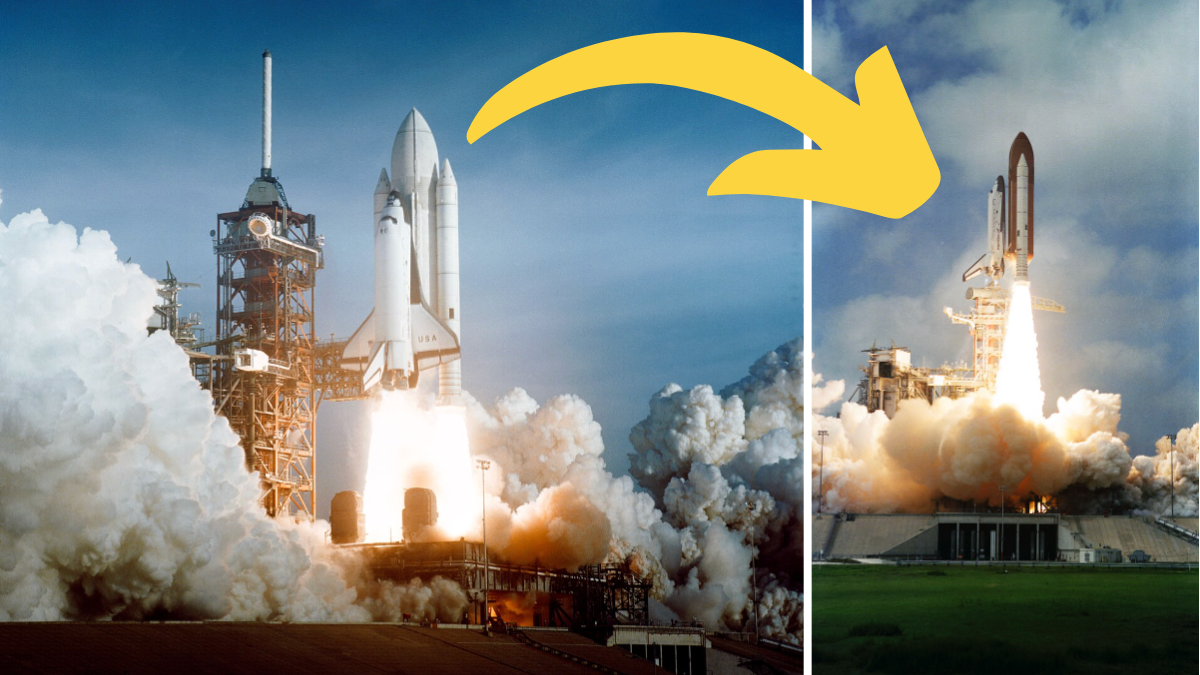Fact Check: Here's Why NASA Decided to Stop Painting Fuel Tank on Its Space Shuttles

Claim:
The space agency stopped painting its shuttles' fuel tank because the white paint added about 600 pounds of weight.
Rating:
In operation for 30 years, NASA's space shuttle was described by the space agency as "the world's first reusable spacecraft" and was "launched like a rocket, maneuvered in Earth orbit like a spacecraft and landed like an airplane." The spacecraft's external tank was also said, according to online claims, to have once been painted white before engineers realized the paint added roughly 600 pounds of weight.
Take, for example, the Reddit post below, which was shared to the r/space subreddit in 2023 (archived here) and had received more than 31,000 upvotes at the time of this publication:
Just learned the space shuttle originally had a white fuel tank but they stopped painting it to save weight.
byu/Klondike2022 inspace
This claim is true.
During the first two space shuttle launches, STS-1 and STS-2, the external tank (ET), then referred to as the standard weight tank, was painted white to protect its insulating foam from ultraviolet rays emitted by the sun while the spacecraft sat on its launch pad.
With the tank standing more than 15 stories tall, the amount of white latex paint needed to cover such a large surface area added an estimated 600 pounds — weight that could be better reserved for other items, such as propellant. By the third mission, the tank was left unpainted, according to NASA's Jet Propulsion Laboratory.

The external tank was painted white for the first two space shuttle launches (left). From the third launch, it was left unpainted (right). (Public Domain/Wikimedia Commons)
Measuring 184 feet long with a 78-foot wingspan, the space shuttle typically weighed around 4.5 million pounds at liftoff depending on its payload. It consisted of three major components: the orbiter, which housed the crew; two solid rocket boosters that provided lift during the first two minutes of flight; and the ET, which held fuel for the main engines. Everything on the space shuttle was meant to be reused except the ET.
Considered the "backbone" of the shuttle, the ET provided structural support during launch because it attached to the rocket boosters and the orbiter. Eight minutes into the flight, once it was nearly empty, the ET was jettisoned off of the shuttle at an altitude of roughly 28 miles. The tank then fell into a preplanned trajectory, disintegrating in the atmosphere with the remainder falling into the ocean.
Empty, the ET weighed 78,100 pounds. It could hold more than 1.5 million pounds of liquid oxygen and liquid hydrogen propellent, putting its total payload at more than 1.6 million pounds.
The space shuttle program launched its first two-day mission on April 12, 1981, and its final mission on July 8, 2011. Each of the five orbiters — Atlantis, Challenger, Columbia, Discovery and Endeavour — was designed to be able to fly more than 100 missions, though all flew far fewer than that. The Challenger exploded shortly after liftoff in January 1986, and the Columbia broke up during reentry in 2003.
Missions typically lasted between five to 16 days with a crew of five to seven people, though the longest mission was 17.5 days with a crew of eight.
Sources:
"Navigating LA with 65,000 Pounds of NASA Space Shuttle History - Teachable Moments." NASA/JPL Edu, https://www.jpl.nasa.gov/edu/news/2016/5/18/navigating-la-with-65-000-pounds-of-nasa-space-shuttle-history/. Accessed 15 Feb. 2024.
The Space Shuttle - NASA. https://www.nasa.gov/reference/the-space-shuttle/. Accessed 15 Feb. 2024.
"The Space Shuttle's External Tank Used to Be Painted White. They Eventually Stopped Painting It and Saved about 600 Pounds of Weight. Unbelievable." America's Best Pics and Videos, https://americasbestpics.com/picture/n-a-the-space-shuttle-s-external-tank-used-to-9f2gOgTVA. Accessed 15 Feb. 2024.
"Why Did NASA Change the Color of the Fuel Tank of the Space Shuttle?" Quora, https://www.quora.com/Why-did-NASA-change-the-color-of-the-fuel-tank-of-the-space-shuttle. Accessed 15 Feb. 2024.



